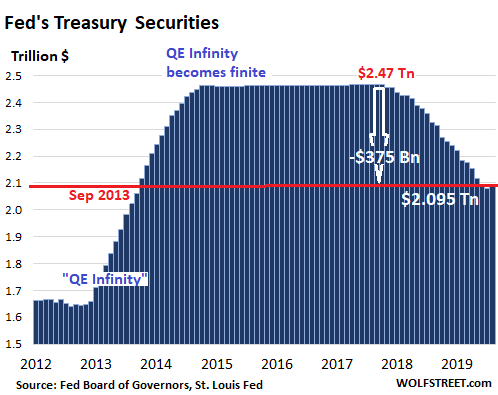Contents
Knowing those personalities is the key to the application of the Wave Principle. Full access to our intuitive epaper – clip, save, share articles from any device; newspaper archives from 2006. Wave 5 is typically inverse 1.236 – 1.618% of wave 4, equal to wave 1 or 61.8% of wave 1+3′. We expected correction not to exceed beyond 7,840 but mkts in its wisdom has breached this level on intraday basis and chosen to bottom out.

All you need to know at this point is that after years of analyzing his ‘waves’, Elliott concluded that the Fibonacci series was the basis of the Wave principle. Fibonacci numbers appear again and again in Elliott wave structures – from motive waves to the far more complex patterns. Each the Motive waves are in the direction of the trend, and the declining Corrective waves (2 & 4) are smaller than the motive waves and go against the prevailing trend. If you see this pattern play out in full, it serves to reinforce the idea that we’re moving in a trend and points to the direction of the trend.
JLR effect: Tata Motors may see 102% surge in Q3 PAT; how to trade the stock
The Elliott Wave patterns are a bit complex, and hence it has few dedicated followers. There are 15 different degrees of waves that a trader needs to know in order to count them properly and trade successfully. As you can see from these last paragraphs, there are quite a few factors to consider. If you have no prior knowledge of Elliott Waves, it might be better if you use a demo account to train before you trade for real. You can also simply follow charts and test your ability to identify waves. This is all theory of course and depends on your ability to correctly identify the waves.
How to spot Elliott Waves?
An impulse wave is made up of smaller waves that are heading in the same direction as the underlying trend. Corrective waves will be heading in the opposite direction of the impulse waves.
In a bull market, an impulse wave moves in the direction of the market’s main trend. It is made up of five wave patterns, three moving in line with the uptrend and the other two in opposite directions. According to Elliott Wave Theory, market movements can be summed up into two kinds of waves — motive or impulse waves and corrective waves.
Learn More about Elliott Wave Theory
B waves are generally less consistent and tend to vary in length more. A very common mistake we have found is that most of the formations that we see purported by analysts to be an Elliott Wave Triangle are not actually valid. We believe that this is through wishful thinking rather than through reasoned analysis. Second waves subdivide into 3 smaller https://1investing.in/ waves and are often sharp and deep, retracing much of the gains of wave 1. Club EWI membership also gives you access to a free Elliott Wave basics tutorial which covers all the basics in more detail than we can in this “Elliott Wave Theory – Quick Start Guide” eBook. Easy to understand but sometimes I feel that videos are very much long.
If this is accurate and if I call the channel of the true value you draw. It is a reasonable price, the price of the action counter train is contained by the action parallel mind, so if the direct and indirect quotation price action is not contained… What’s the difference between a running triangle and, contracting triangle? The wave “B” is beyond the origin of wave “A” we have diagram in a chart.
- See how to win, lose, or breakeven through rules when Elliott wave explained.
- Traders could be described as riding the wave to profit from the fluctuations from the capital market which forms the basis for the Elliot Wave theory.
- Fractals are mathematical structures or statistical structures which repeat themselves on smaller scales.
- The 50 minutes education video course covers Elliott Wave principle rules, guidelines, characteristics, wave patterns, wave structures, wave charts, and Fibonacci relationships.
At this stage, some of the original buyers decide to ‘take profit’ and, when they sell, the instrument’s price decreases. This time though, it won’t get to its earlier low before it’s viewed as ‘cheap’ again. All this is true for a bull market, where prices typically move up. If we’re dealing with a bear market, where prices typically move down, this pattern is reversed.
In some cases because a relatively small number of investors feel – from various reasons that don’t have to be real – that the instrument price is ‘cheap’, and decide to buy it. The remaining two Elliott Waves, the second and fourth, act as minor retracement points or counter-trends within the underlying trend. At this point, after wave is complete, there is now a set of 3 waves , and of greater magnitude than the two previous corrections.
Market stays weak, but these 10 stock ideas can make big money for you
Comparison between Running triangle-Leading and Ending Diagonals Chart 1 depicts a theoretical structure of Running triangle and an ending diagonal in a down trend. Accordingly downward move is termed as directional move and move to the upside is termed as non-directional. Investopaper.com is a financial website which provides news, articles, data and reports related to business, finance and economics. Investopaper is a financial website which provides news, articles, data, and reports related to business, finance and economics. The above-mentioned information can be used to predict the target of each wave of an impulse. Thus helping to find an appropriate entry and exit position in the market.

One theory i.e., Elliot Wave Theory is widely believed and used in financial markets. IFMC Elliott Wave course online training let’s you master one of the most advanced concepts of technical analysis. Elliott Wave theory course for beginners is an advanced study of mass psychology. Our trading strategy experts offer an insight to good Elliott Wave entry points to superior risk management and reward ratio. He observed that the markets often appeared to move in recurring and recognisable patterns.
Elliott Wave Triangles
Vice-versa, a Corrective Wave is a wave moving in the opposite direction. Elliot argued that financial markets develop patterns that are fractal in nature. While EWP can be a tough topic, this book eases you into the technique by taking you step by step through Elliott Wave analysis. Preliminary coaching unravels common misunderstandings that tend to sabotage those getting started. First, you’ll discover how price swings and waves are not the same.
Here is a list of eleven stocks which are likely to be in focus today. Apart from booking partial profits, you can also hedge your equity portfolio with the help of put options. One can buy short duration put options that will expire in 1-3 months or go with long-duration put options that will expire after a year. Knowing the future can be very profitable for a trader; imagine the riches that can be reaped if one knows where the prices are headed beforehand.
How successful is Elliott Wave Theory?
Elliott Wave Theory can prove to be highly successful in analysing past stock data to predict future price movements. However, you must use it in conjunction with other technical indicators.
It is here that the investor finds determinism in a seemingly random process. Waves can be seen in stock price movements and in consumer behavior too. An investor looking to book profits from market trends can be described as riding a wave.
WithMastering Elliott Wave Principleas your guide, you’ll be in a better position to trade today’s dynamic markets. Several trend-following indicators such as oscillators and sentiment measures have their strong points, yet they generally maturity of a trend. Moreover, these technical approaches to trading are not as useful in establishing price targets as the Wave Principle. “Elliott Wave Theory” course videos are for educational and information purpose only. We advise you to understand the strategies well and use your own discretion to use them in live markets.
Introduction To Elliott Wave Principles
Wave 3s are never the shortest impulse wave and are the most likely to extend. RN Elliott’s work remained relatively unknown until the 1970s when A. Frost and Robert Prechter Jr. published Elliott Wave Principle which is now widely regarded as the definitive guide to Elliott Wave Theory. It has since become one of the most popular and commonly used technical analysis tools. It looks like mother Sumi has completed the 4th wave correction, and the ending point of the corrective wave is the starting point of wave .

First leg order gets tagged with second/third leg order and profit and loss will be calculated based on such tagging and will be computed based on the pair of trades that get executed through the product. Having said that, Elliott Wave Theory is not an absolute science. At best, it offers high-probability opportunities based on similar patterns observed earlier in nature. Technical analysts following the theory call themselves Elliottticians. They are increasingly being used by analysts to predict market turning points which offer a low-risk trading opportunity.
Elliott Wave Theory Certificate Course
They may last for several hours or several months or several years or even decades. Impulse waves with five sub-waves are the most common in the market and are very powerful analytical tools. At any given period the price movements seem to alternate between an impulsive wave or motive wave and a corrective wave. The impulse wave indicates the trend of the next largest degree. It consists of 5 sub-waves that make the final movement in the trend direction of the upcoming largest degree. The impulse waves are direct towards up movements in uptrends and conversely direct towards the downside in the downtrends.
What is the theory behind Elliott Wave?
The Elliott Wave theory is a form of technical analysis that looks for recurrent long-term price patterns related to persistent changes in investor sentiment and psychology. The theory identifies impulse waves that set up a pattern and corrective waves that oppose the larger trend.
It also allows them to adjust their portfolio to realise gains or mitigate losses. The basic pattern shows that markets move forward in a series of 5 waves of psychological development . When these 5 forward waves are complete, a reaction sets in, taking place in 3 waves . Each and every set of waves is nested within a larger set of waves that follow the same impulse or corrective pattern. Deciding where each of these phases begins or ends is mostly a matter of intuition. As such, there are no generally accepted methods, and each trader will sooner or later improvise his own techniques for determining the time frame of a trend.